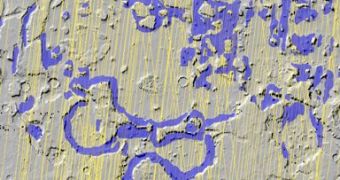NASA has given a four-year $630,000 grant to the New York Center for Astrobiology, to support its research of conditions of life on other planets. The center opened in 2008 with support from the National Space Agency and its main mission is to look into the origins of life and to find conditions that could sustain life of other planets, from our solar system and beyond.
What scientists found out so far is that stars help the formation of complex matter on planets. Douglas Whittet is the director of the New York Center for Astrobiology and a professor of physics, applied physics, and astronomy at the Rensselaer Polytechnic Institute. He explained that after stars' formation, molecular clouds around them gather into pre-planetary disks, before turning into planets and during this process complex matter can be found in increasing amounts. “Organic molecules such as hydrocarbons and alcohols are more common in pre-planetary disks compared with molecular clouds,” he said. “These molecules form with the help of energy from the star.”
Whittet added that “you need energy to drive the chemistry. A star itself can cook simple molecules into something more interesting.”
Scientists study all the chemical, geological and physical conditions that allowed life on Earth. Then they look for similar conditions on other planets, starting with Mars and other bodies in our solar system, and extending to other stars and their orbiting planets.
Douglas Whittet said that “a lot of organic molecules present on Earth may have been delivered shortly after it was formed. The evidence for this comes from meteorites, which contain amino acids. What researchers try to find out is what was happening at the beginning of the universe, some 4.5 billion years ago. “When and how was this matter synthesized, and how common is it?”
The method they use is called spectroscopy and it analyzed the light signature of the material present in clouds and disks. They use the star as a source of radiation and as the material between them and the star absorbs some of it, scientists look at the absence of light, Whittet explains.
Researchers at the New York Center for Astrobiology, based at Rensselaer Polytechnic Institute are now analyzing data gathered between 2003 and 2009, by the sun-orbiting Spitzer Space Telescope. The new grant will allow them to “support some more collaborations” and continue this research and their life-conditions-seeking mission. “There's a huge archive of data that's being analyzed, and the grant will afford us access to more of that material,” Whittet added.

 14 DAY TRIAL //
14 DAY TRIAL //